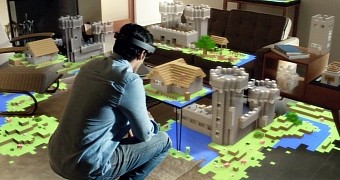Right now, the public finally has a faint idea of when they can start making plans, or software, based on Microsoft's HoloLens.
In a recent interview for BBC, Microsoft's CEO Satya Nadella has said that the first HoloLens V1 models will be made available only for developers barely in 2016. Apparently, other consumers will probably have to wait another five years before the augmented reality headset is released publicly.
The HoloLens are unique because they superimpose a virtual reality object on the surrounding environment of the viewer. While viewing said model, the person using the HoloLens can manipulate it in various ways.
Nadella says that the "field of view" is the main issue behind the major delay of the public release, as the only way to make the device work properly is to look in the dead center of your vision to work properly. Once the user uses the peripheral vision, the effect is lost. Microsoft plans to fix this issue until it's ready to hit the markets, probably in 2020, while developers are working on compatible software for the new technology.
Will this delay help Microsoft on the long run?
It appears that Microsoft is following the same controversial principle of concurrency that has plagued even larger and infinitely more expensive projects, turning them into financial black holes. Concurrency means developing and integrating a prototype project into a pre-existing system all at the same time, hoping this way that it'll save money and time until the project is finished and ready for wider use.
Microsoft believes that HoloLens will improve where Oculus Rift is lacking, in the sense that it will turn augmented reality into a more useful device that is reality-connected, instead of the entirely VR-generated environment of Oculus Rift.
The Redmond-based tech giant wants to believe that, while Oculus is perfect for kids and gamers, HoloLens is suited for students, artists and generally "grown-ups." Although that could be true, as Autodesk is already working tight with Microsoft in building a complete Autodesk Maya augmented reality environment, or medical applications that will help students learn anatomy faster, it's the Oculus Rift that has the development head start in the end.
Both headsets and their virtual/augmented reality principles could work fine hand in hand after all, but while Oculus Rift may find countless applications already available by 2017, there will be no tangible consumer experience available for HoloLens until 2020.

 14 DAY TRIAL //
14 DAY TRIAL //